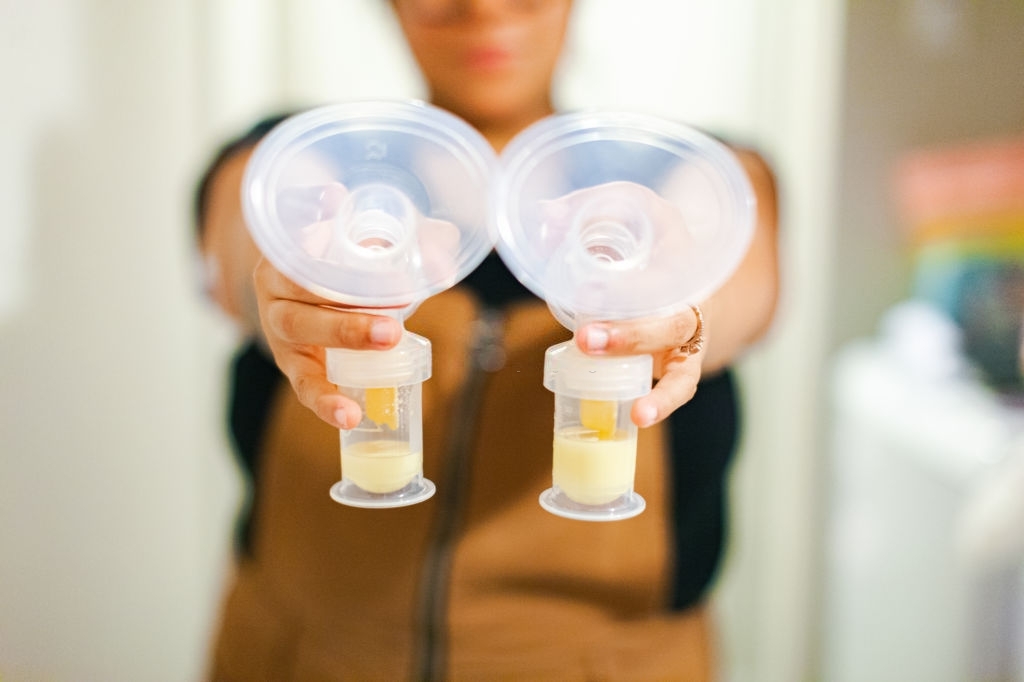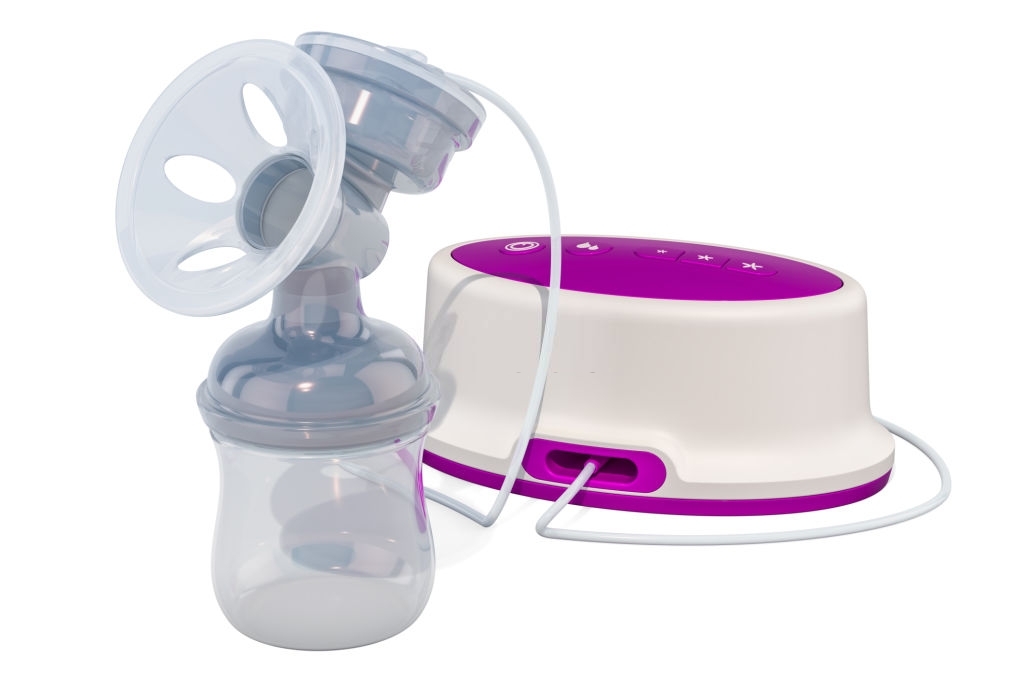Whether you are going back to work; want to be able to get time away from your baby to take care of yourself, run errands, or spend time with dad; or planning to pump exclusively, the breast pump can be an invaluable tool.
Using a breast pump is also a great way to help increase your breast milk supply. While you are able to rent one from your local hospital, it can be bulky and heavy.
If you are going to be breast pumping frequently, especially if you are going back to work, you may want to consider purchasing a breast pump. However, you may have some questions.
Where do you buy a breast pump? There are so many different styles and types. Manual pumps, electric pumps, single pumps, double pumps. Some have breast milk storage systems, some don’t. Some have removable battery packs, some don’t.
Some weigh less than others do and some come in convenient carrying cases. Which breast pump is better? Which is right for you? Is it worth it buying one?

You can buy manual breast pumps and some electric pumps at most places that sell baby supplies. There are also many private suppliers and online suppliers.
If you have trouble finding a breast pump talk to a lactation consultant and she can tell you where to get a pump to suit your needs.
The top brand names in pumps are Medela, Ameda, Avent, Lasinoh and Elvie so if you really need a quality pump, it is recommended that you go with one of these brands.
There are two main classes of pumps: manual pumps and electric (or battery-powered) pumps.
Manual Breast Pumps

Manual pumps work well for some women and some women prefer these to electric pumps. They are lighter and easier to carry and they are less expensive than their electric counterparts.
Manual pumps are great for women who have an ample supply of breast milk as it can be more difficult to obtain milk from pumping manually and it can be difficult to empty your breasts completely which can lead to a decreased breast milk supply.
They may be the best choice for someone who does not need to pump often, yet has an ample breast milk supply so that breast pumping is not difficult.
While some women like being able to control the pumping action themselves with the manual pump, other women find their hands get tired out from pumping continuously.
Most manual pumps must be operated with two hands, but there are models that are made for one-handed operation. This may be preferable for you.
Best Manual Breast Pumps in 2022
It is a fact of life that almost every new mother learns: even the most dedicated mother needs relief from breastfeeding at one point or another.
Whether it’s a much-needed nap, a date with Daddy, or an outing with the baby, there are times when breastfeeding, natural as it may be, just is not possible or appropriate.
This does not mean that we must use formula as our backup, however, when there are breast pumps on the market. With the number of pumps available, though, there is some concern over finding the best one.
With this in mind, I have created a list of the top three manual breast pump reviews, along with some useful information.
What is the difference between manual and electric breast pumps?
A breast pump is just what it sounds like. It is, essentially, a bottle attached to a suction cup that fits over the nipple and extracts milk by gentle suction.
At least ideally. In reality, a pump’s suction can be as varying as the brands on the market. This is where the difference between manual and electric models comes in.
Manual Breast Pump Benefits
Manual pumps are easier to customize, making sure the experience is as pleasant as possible for Mommy, as well as being easily portable and convenient.
They typically weigh less than electric pumps, are easier to clean and care for, fit better into baby bags and purses, and are much more discreet.
The manual breast pump cost is, typically, much less than the electric versions, and there is no noise associated with engines.
In addition, pumping manually can increase milk output, as well as engender a feeling of control over the process that can be missing with the electric machines.
It also, of course, gives Mommy the chance to continue to feed her child in the healthiest, most natural way possible even while she’s at work.
Which Manual Breast Pump is Best in 2022?
Lansinoh Manual Breast Pump
Lansinoh is a brand that supplies nursing supplies. Because of this, we can be sure that it is a medical-grade product.
It comes with one pump, one cushion, two bottles with rings and sealing discs, an extra diaphragm, two valves, and a cleaning brush. This pump costs an average of thirty dollars.
Pros
- Dishwasher safe
- Hospital grade
- Easy to Assemble
- SoftSeal cushion for optimum comfort
- Easy-action pump to reduce hand fatigue
- BPA free
- Lightweight
- Compact
- No batteries needed
Cons
- Plastic breaks down easier than heavier-duty materials
- Product occasionally squeaks
- Milk expression is, typically, slower than an electric model
- Incorrect operation can cause insufficient suction
- Arm occasionally squeaks
Medela Harmony Breast Pump
Medela is a Swiss company that makes things expressly for the nutrition and health of mother and infant.
It has been in business since 1961 and has continually developed new technology to keep up with the growing needs and restrictions associated with motherhood and the feeding of infant children.
The box comes with the pump, one SoftFit shield, one stand, two five-ounce containers and lids, and an instruction manual. It, too, costs an average of thirty dollars.
Pros
One piece, no assembly required
Contoured, swiveling handle for maximum comfort
SoftFit shield massages breast while pumping
Two-phase expression mimics the natural rhythm and intensity of your baby’s suckling; making it one of the most comfortable ways to pump milk
Cons
Small plastic parts and tiny rubber rings are prone to failure
Customer reviews report that it is not appropriate for already sore nipples
Does not fit all bottles
Philips Avent BPA Free Manual Breast Pump
Philips Avent is a line of infant and child care products that is highly respected and recognized. This one is completely BPA-free, making it as healthy for the baby as possible.
The package comes with the pump, stand and funnel cover, bottle, newborn nipple, travel pack, nipple sealing disk, and instruction manual. This pump costs about the same as the other two, averaging about thirty-two dollars.
Pros
Highly respected brand
Strong suction
Travel pack makes it easily portable
Cons
Not designed for mothers with large nipples, nipples rub against the shield
Can leak where pump meets bottle, creating a loss of milk
Has too many parts, and is difficult to clean.
Electric Breast Pumps

There is a wide range of electric or battery-powered pumps available. The lower-end electric or battery-powered pumps are generally designed to pump only one breast at a time and they often have a suction that is not adjustable and is either too strong or too weak.
It is important to use caution when considering this type of pump as it can hurt your breasts or cause discomfort while pumping. These breast pumps generally need their batteries changed often and may be more trouble than they are worth.
A mid-range electric pump may be more practical for your purposes. They are very easy to transport and generally are able to pump both breasts at the same time.
While they have an adjustable suction, pumping takes a little longer with these pumps as they have medium cycling times, but unless you pump during breaks or lunch at work or are otherwise pressed for time, this may be all you need.
The best Electric Breast Pump – Medela Pump in Style Advanced Breast Pump
The Medela Pump in Style model is an electric double breast pump that consistently receives great reviews. It is designed for daily use and was created with traveling in mind as buyers of the Pump in style will have a choice of a travel tote or a travel backpack as accessories of the breast pump.
Pros:
- Comes with a roomy storage bag with a handy cooler with an ice pack that can keep milk cool for up to 12 hours, great for when you are busy.
- Even though it is electric, it can also be used with batteries or in the car with an optional car lighter adapter, so you can express milk anywhere.
- The 2-Phase Expression technology enables you to pump more milk in less time.
Cons:
Although somewhat rare, some people report the motor malfunctioning after a few months of use. Due to this, it is advisable to keep the receipt in case a call to customer service for a replacement is in order.
Let’s face it. If you are a mom who is going back to work full-time and who will be pumping 2-3 times per day, often during breaks and lunch, then efficiency is the name of the game and the top-of-the-line pumps may be your only option.
Read also: Combining Breastfeeding and Pumping
You will need something that is easy to transport, easy to set up, and easy to clean and something that offers a storage solution for the milk that you pump through the day. Make sure the user’s guide is straightforward and easy to read. It is also important to consider the size of the breast shield.
If your nipples or breasts hurt during breast pumping, it may be that the size of the breast shield is too small. You can always contact the manufacturer and have them send you a large, extra-large, or soft shield, which will make pumping more comfortable for you.
Related: What are the Side Effects of Breast Pumping?
If being discreet is important, you will also need to consider the level of noise the breast pump makes and test this out before you make your decision.
High-end models have quick cycling times, adjustable suction, and are made with dual pumping capability. They generally come in attractive carrying cases and many of them include battery packs. There are also pumps that mimic the changing sucking patterns of your baby.
There are even hands-free pumps available that are designed to tuck into your bra for discreet use. This can be ideal when you are at work, especially if you are in an environment where privacy or time is an issue, or where support for the pumping and breastfeeding mother is not as high as it could and should be.
Conclusion
It is important to consider your needs and your lifestyle when deciding what type of pump to purchase. If you are going out for dinner once a month with your husband and baby is staying with grandma and grandpa, then it is probably not worth your while to drop $300 on a dual-capability electric pump.
On the other hand, if you are pumping to feed your baby five days a week while you are at work, then you need something more efficient than a $50 manual pump.
Weigh your options, do your comparison shopping, and get what feels right for you. After all, when all is said and done they are your breasts and you need to go with your own comfort level.
And remember, you are choosing to pump because you want to give your baby the very best start in life you have to offer. So, get out there and start pumping.

